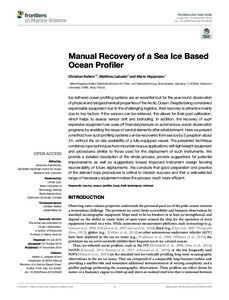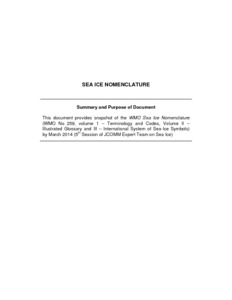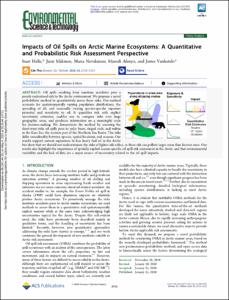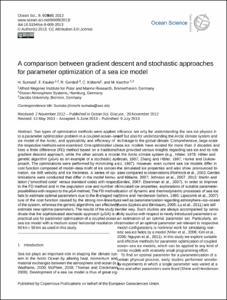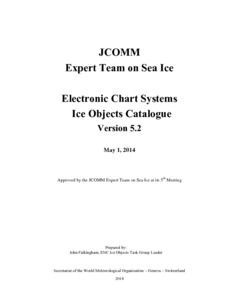Search
Now showing items 1-7 of 7
Manual Recovery of a Sea Ice Based Ocean Profiler.
(2019)
Ice-tethered ocean profiling systems are an essential tool for the year-round observation
of physical and biogeochemical properties of the Arctic Ocean. Despite being considered
expendable equipment due to the challenging ...
Oil spill response capabilities and technologies for ice-covered Arctic marine waters: a review of recent developments and established practices.
(2017)
Renewed political and commercial interest in the resources of the Arctic, the reduction in the extent and thickness of sea ice, and the recent failings that led to the Deepwater Horizon oil spill, have prompted industry ...
Sea-Ice Nomenclature: snapshot of the WMO Sea Ice Nomenclature (WMO No. 259, Volume 1 – Terminology and Codes, Volume II – Illustrated Glossary and III – International System of Sea-Ice Symbols)
(WMO-JCOMM, Geneva, Switzerland, 2014)
This document provides snapshot of the WMO Sea Ice Nomenclature (WMO No. 259, Volume 1 – Terminology and Codes, Volume II – Illustrated Glossary and III – International System of Sea-Ice Symbols) by March 2014 (5th Session ...
Impacts of Oil Spills on Arctic Marine Ecosystems: A Quantitative and Probabilistic Risk Assessment Perspective.
(2020)
Oil spills resulting from maritime accidents pose a poorly understood risk to the Arctic environment. We propose a novel probabilistic method to quantitatively assess these risks. Our method accounts for spatiotemporally ...
A comparison between gradient descent and stochastic approaches for parameter optimization of a sea ice model.
(2013)
Two types of optimization methods were applied to a parameter optimization problem in a coupled ocean-sea ice model of the Arctic, and applicability and efficiency of the respective methods were examined. One optimization ...
Electronic Chart Systems Ice Objects Catalogue Version 5.2, 2014 edition
(JCOMM Expert Team on Sea Ice (ETSI), Geneva, Switzerland, 2014)
Electronic Navigation Charts (ENC) and Electronic Chart Display and Information Systems (ECDIS) are becoming widely available on ships navigating in icy waters and it is necessary to provide ice data in a form that can be ...
Ice Chart Colour Code Standard, Version 1.0, 2014.
(World Meteorological OrganizationIntergovernmental Oceanographic Commission of Unesco, Geneva, Switzerland, 2014)
This document describes two separate colour codes for use on ice charts: the first one based on total concentration (CT) intended for use when the stage of development is relatively uniform but concentration is highly ...
 Repository of community practices in Ocean Research, Applications and Data/Information Management
Repository of community practices in Ocean Research, Applications and Data/Information Management
